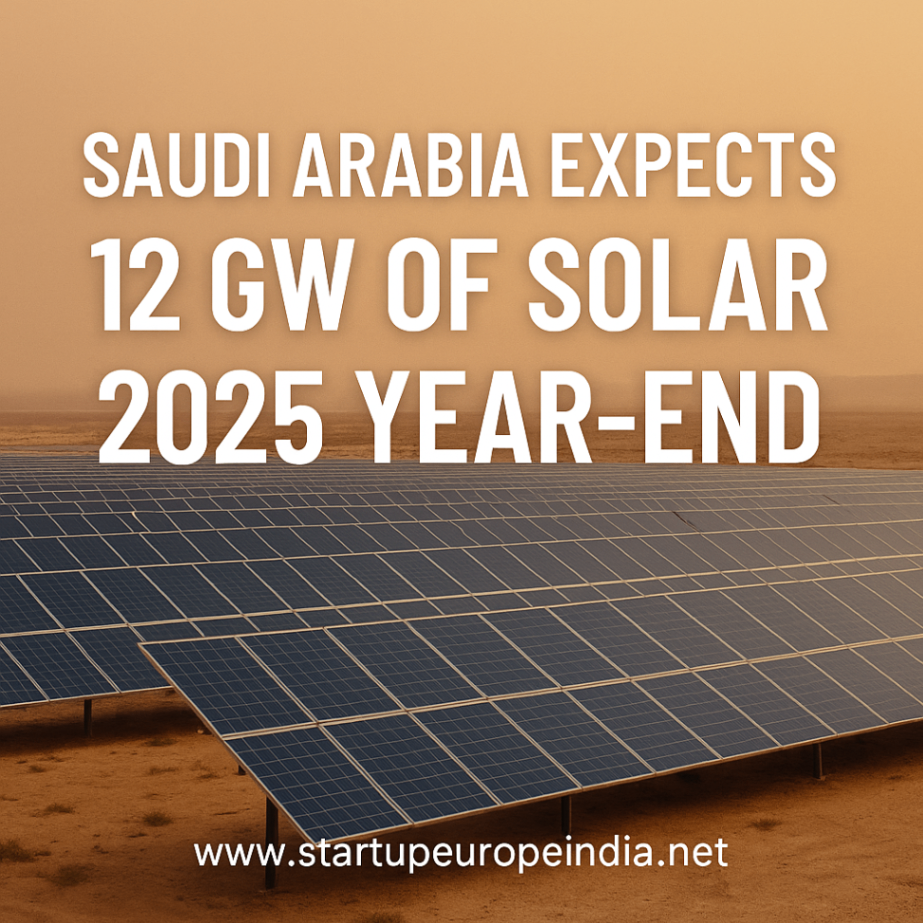Saudi Arabia’s Solar Surge: How a Petrostate Is Building a Clean-Energy Export Strategy

Sarah J
Posted on Mon, Nov 17, 2025
Share the article with your network
Saudi Arabia is accelerating an ambitious pivot toward renewables, rapidly building utility-scale solar as part of a broader economic calculus to free oil for export and diversify under Vision 2030. The kingdom, long seen as a brake on global climate action, now ranks among the fastest movers in new solar capacity-without signaling an end to its fossil-fuel dominance.
Key assets and capacity ramp-up
- Al Shuaibah 2, now the country’s largest solar farm, exceeds 2 GW-enough to power roughly 350,000 homes-and is one of several mega-projects advancing across desert sites south of Jeddah. Larger plants are already in development as capacity scales.
- After having “next to no renewables” in 2020, Saudi Arabia is expected to reach about 12 GW of solar by year-end 2025, pushing it into the top 10 global markets for annual new solar additions for the first time.
- Rystad Energy projects more than 70 GW of solar installed by 2030, with onshore wind also entering the mix.
Strategic investment and partnerships
- ACWA Power, alongside Badeel and Saudi Aramco Power Company (SAPCO), announced a $8.3 billion program to deliver 15 GW of renewables (12 GW solar; 3 GW wind), with operations slated to begin from late 2027 to early 2028.
- The program aligns with Vision 2030 and the National Renewable Energy Program, under which Saudi aims to source 50% of electricity from clean energy and 50% from gas by 2030.
- The kingdom is also building clean power supply for flagship developments, including the $500 billion NEOM city and Red Sea tourism projects, with integrated storage and smart-grid solutions.
Economics driving the build-out
- Utility-scale solar has benefited from sharply lower module prices—driven in part by Chinese panel imports—and battery costs that fell an estimated 40% in 2024, improving solar’s dispatchability and reducing system costs.
- Saudi Arabia’s solar economics are strengthened by abundant sun, cheap land, low-cost grid connections near major load centers, and economies of scale from very large installations.
- A core aim is to displace domestic oil-fired power, reserving crude for higher-margin export markets. Burning oil for electricity is comparatively inefficient, and shifting generation to renewables and gas supports export revenues.
Storage and grid flexibility
- Saudi Arabia is emerging among the top 10 global battery storage markets, with a target of 48 GWh of storage by 2030 and major projects—such as the Bisha 2,000 MWh facility—helping to firm solar output and stabilize the grid.
- Planned milestones include bringing 8 GWh online by 2025 and 22 GWh by 2026, positioning the kingdom near the global leaders in storage deployment.
Progress and constraints
- Despite rapid build-out, renewables’ share in the electricity mix remained low at the end of 2024 (around 2%), reflecting how quickly demand is rising and how dominant gas remains.
- Independent trackers rate Saudi’s overall climate policy as critically insufficient relative to pathways aligned with limiting warming, and analysts caution the 50% clean-electricity target by 2030 may be challenging.
- Others are more optimistic, projecting the kingdom can surpass one-third renewables by 2030 and achieve 50% soon after, particularly if storage and grid integration keep pace with solar expansion.
Competitive positioning vs. global peers
- Saudi Arabia’s strategy diverges from current U.S. federal headwinds to wind and solar, pursuing an “all of the above” energy mix while scaling clean-tech manufacturing and EV ambitions.
- Regionally, the UAE, Oman, and even Iran are expanding renewables to address reliability, growth, and sanctions-related constraints—yet Saudi’s scale, financing, and integrated energy industrial base give it a unique edge.
Energy diversification without an end to oil
Saudi Arabia’s renewables push is rooted in economics, grid modernization, and a bid to future-proof export revenues. Solar deployment, backed by storage and large-scale transmission, is reshaping the domestic power stack. But the kingdom remains a petrostate, expanding gas capacity and asserting oil’s role in global markets and diplomacy. The most likely trajectory is a dual-track energy system: rapid growth in clean power within Saudi Arabia, coupled with sustained-and strategically defended-fossil-fuel leadership abroad.
---
Startup Europe India Network is a B2B Digital Platform enabling partnerships, innovations and acquisitions in the Europe-UK-India corridor.
You may also like
Shreekant Patil
Sat, Nov 15, 2025
Shreekant Patil Discusses Indian Startup Growth and Technology Transfer at Wrocław City Council Poland

Shreekant Patil
Thu, Nov 13, 2025
SPSC UK Awards Shreekant Patil Bronze Medal for Driving SDG Impact in India

Shreekant Patil
Thu, Nov 13, 2025
Shreekant Patil Drives India Poland Tech Collaboration, Startup Growth
